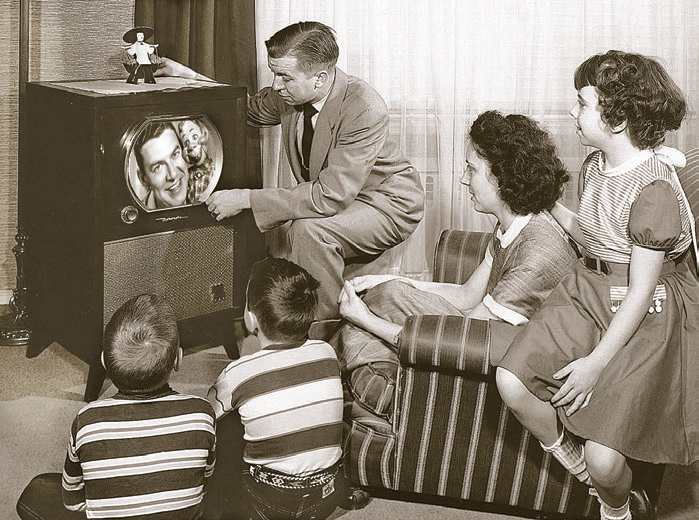Aura of the Era
 |
|
like the one pictured here, commonly put the Motorola television in the middle of mid-century modern utopia. |
 |
|
|
 |
|
|
They were easy to spot, back in the 1990s, along the pleasant residential streets in the Southern California city of Torrance—big, boxy consoles, often of mahogany, housing cathode ray tubes, electromagnets, and circuitry.
They were dinosaurs, these hard-wired television sets from the 1950s, '60s, and early '70s—and they were sitting curbside waiting for the waste hauler.
Dan Yahro, a teenager on a bike, would get there first, clawing through their innards for parts. "Of course, I couldn't bring the whole console home to my parents' house," Yahro says, with regret.
"I pretty much boxed them up and kept them," he says of the parts—many of which he still has, and uses to this day, to restore televisions from the mid-century.
A hardcore collector who still resides in Southern California, Yahro owns nearly 100 vintage TVs today. About 20 are fully restored, and "maybe another 30 percent work," he adds. "The rest need attention."
These days, Yahro is far from the only person with an eye out for pre-digital, pre-LED, and pre-LCD sets from yesteryear. Chief among fans of early TVs are people who enjoy spiffing up their mid-century modern homes in a historically accurate way.
"The number-one attraction for mid-century modern TVs is not really the performance of it—but the appearance of it, and how it brings the whole room together," says Mark Saunders, who has a classic TV in his Eichler home in Sacramento and sells collectible TVs along with other furnishings at his GoogieTime store in Sacramento's Midway Antique Mall.
"It really adds to the authenticity of the room."
With this simple addition to a home, one can evoke the aura of the post-World War II era, when TV first became the rage—and sales zoomed. In 1946, Americans owned 44,000 sets; in 1952, they owned more than 24 million. During that span and afterwards, American life was completely altered in ways that caused some to celebrate and others to shudder.
Shows like 'Howdy Doody,' 'Amos and Andy,' 'Our Miss Brooks,' and the 1954 Army-McCarthy commie hearings brought the entire world, sight and sound, into America's living rooms.




